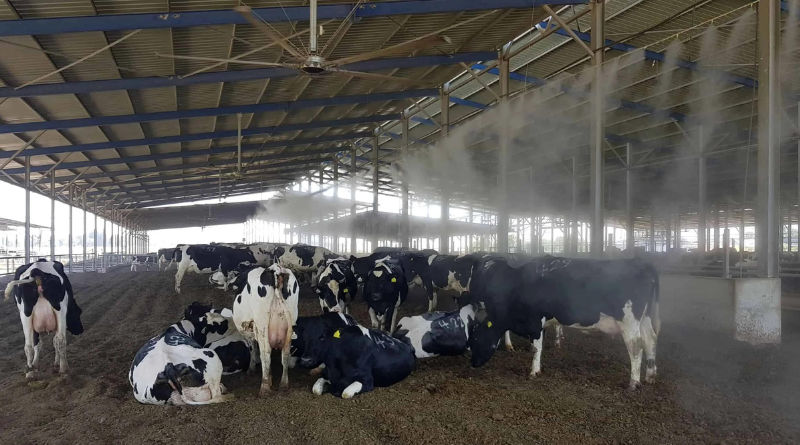Tips for Cattle Care During the Summer Season
As the scorching heat of summer approaches, it brings along challenges for cattle owners. High temperatures, humidity, and intense sunlight can adversely affect the health and well-being of cattle. However, with proper care and attention, you can ensure that your cattle stay healthy and comfortable during the summer months.
Provide Ample Shade:
- Cattle are susceptible to heat stress, so it’s crucial to offer them ample shade to escape the direct sunlight. Ensure that there are enough trees, shelters, or artificial structures in the pasture for your cattle to seek shade throughout the day.
Access to Fresh Water:
- Hydration is key to combating heat stress in cattle. Make sure there are multiple sources of clean, fresh water available to your cattle at all times. Check water troughs regularly and clean them to prevent the growth of algae or bacteria.
Adjust Feeding Schedule:
- During hot weather, cattle may eat less to avoid generating excess body heat through digestion. Consider adjusting their feeding schedule, offering smaller meals more frequently during cooler parts of the day, such as early morning or late evening.
Monitor Body Condition:
- Keep a close eye on your cattle’s body condition during the summer months. Heat stress can lead to weight loss and decreased productivity. If you notice any signs of dehydration or weight loss, consult with a veterinarian promptly.
Provide Cooling Methods:
- Implement cooling methods to help cattle regulate their body temperature. This can include installing misters or fans in the barn or using sprinkler systems in the pasture to create a cooling effect.
Minimize Handling Stress:
- Limit unnecessary handling or transportation of cattle during hot weather, as it can exacerbate heat stress. Plan activities such as vaccinations or hoof trimming for cooler times of the day.
Monitor for Signs of Heat Stress:
- Familiarize yourself with the signs of heat stress in cattle, such as excessive panting, drooling, lethargy, or increased respiration rate. Act promptly if you observe any signs of distress, providing immediate cooling and veterinary care if necessary.
Check out : Cooling Ventilation
Conclusion:
By following these essential tips for cattle care during the summer season and being proactive in monitoring your herd’s health, you can help ensure their well-being and productivity even in the hottest of temperatures. Remember, providing adequate shade, water, nutrition, and implementing cooling measures are key to keeping your cattle comfortable and healthy during the summer months.
FAQs about Cattle Care During Summer:
- Q1: How can I prevent heat stress in my cattle during the summer?
- Providing ample shade, access to fresh water, adjusting feeding schedules, and implementing cooling methods are effective ways to prevent heat stress in cattle.
- Q2: What are the signs of heat stress in cattle?
- A2: Signs of heat stress in cattle include excessive panting, drooling, lethargy, increased respiration rate, and decreased feed intake.
- Q3: How often should I check water troughs during the summer?
- A3: Water troughs should be checked and cleaned regularly, ideally at least once a day during hot weather, to ensure that cattle have access to clean, fresh water at all times.
- Q4: Is it necessary to provide supplemental feed during the summer months?
- A4: Depending on the nutritional needs of your cattle and the quality of pasture available, you may need to adjust their feeding schedule and provide supplemental feed to maintain their body condition during the summer.
- Q5: What should I do if I suspect one of my cattle is experiencing heat stress?
- A5: If you suspect heat stress in a cattle, immediately move it to a shaded area, provide access to cool water, and use cooling methods such as misters or fans. If the symptoms persist or worsen, consult with a veterinarian for further assistance.

